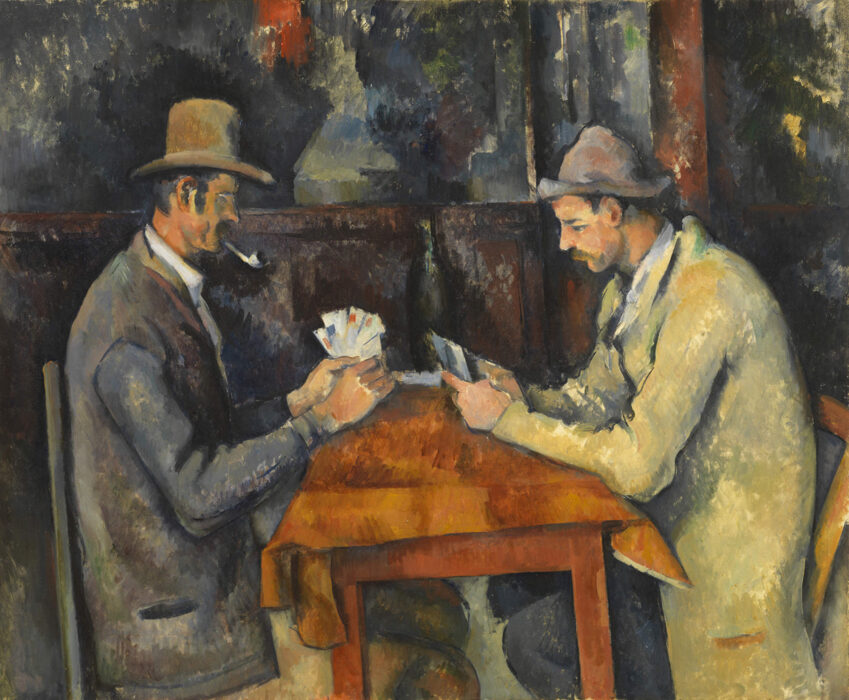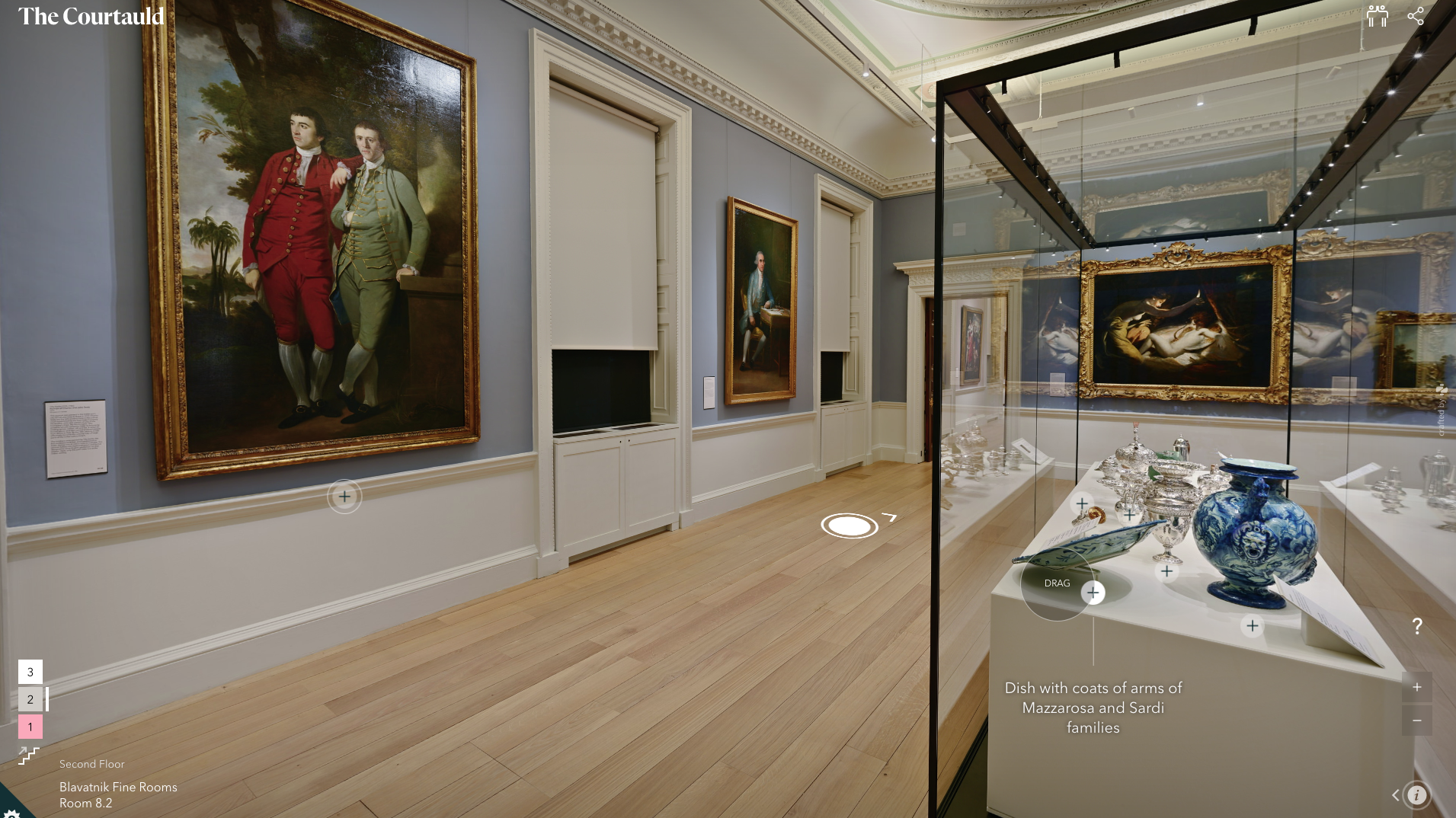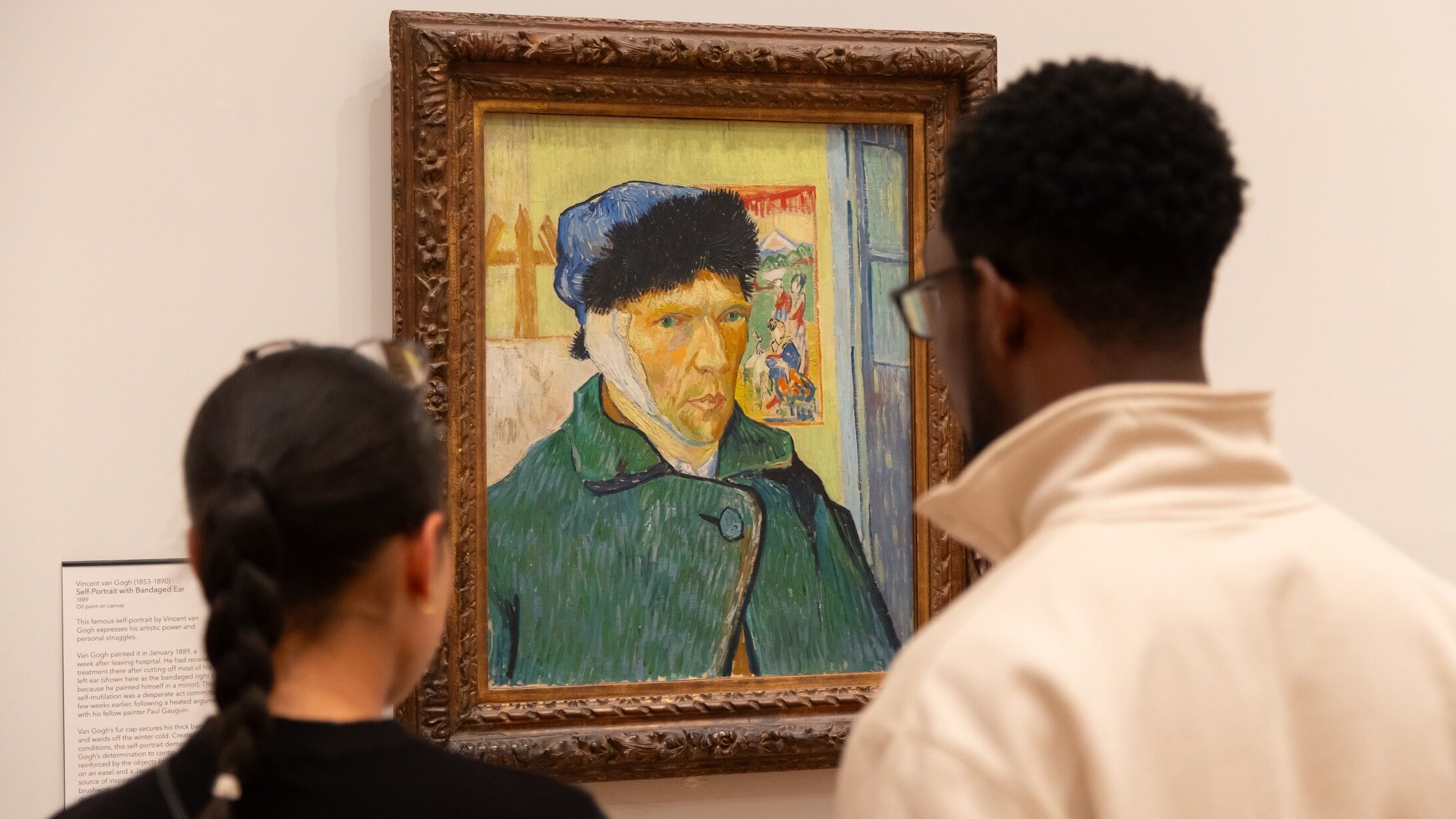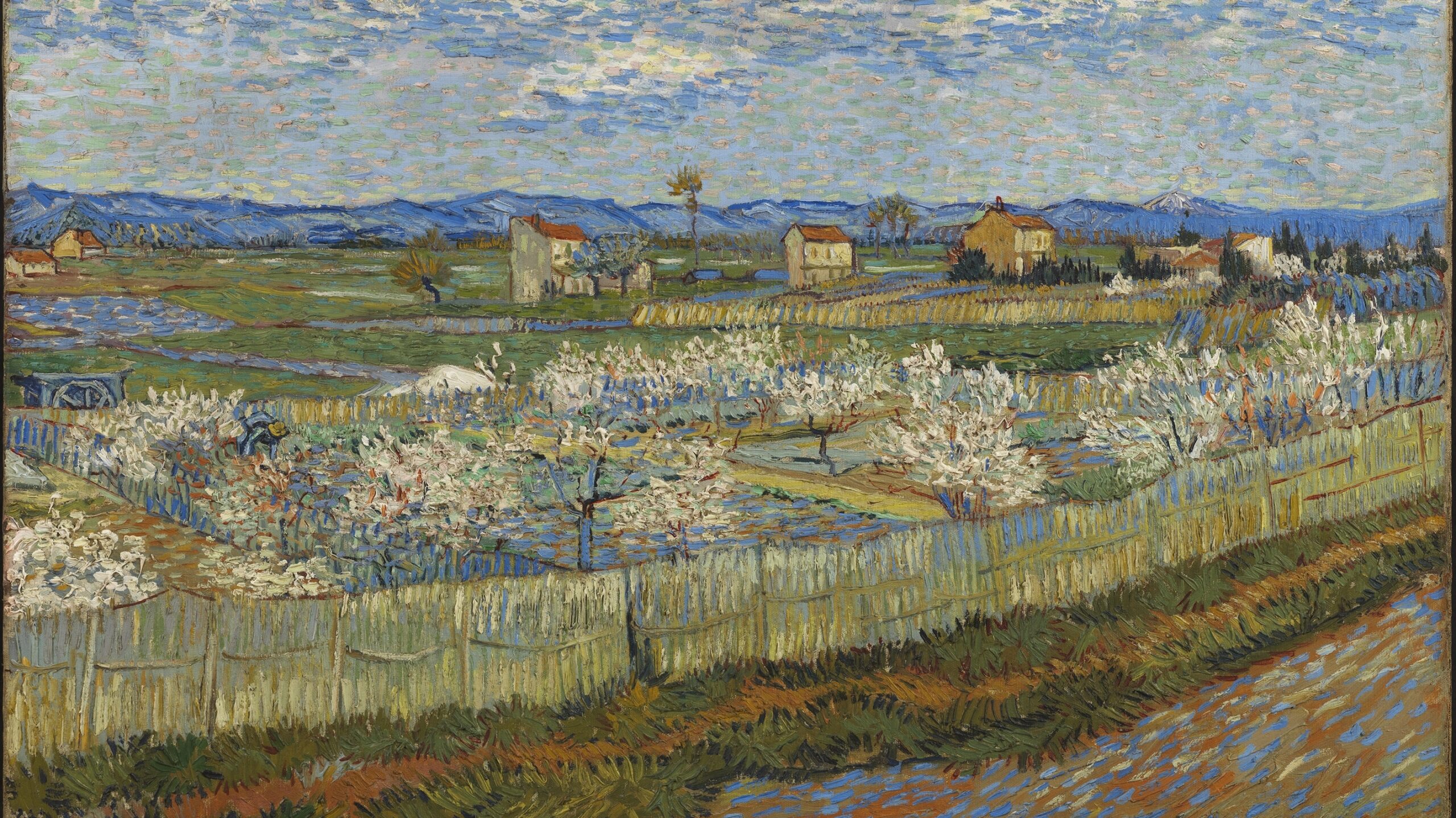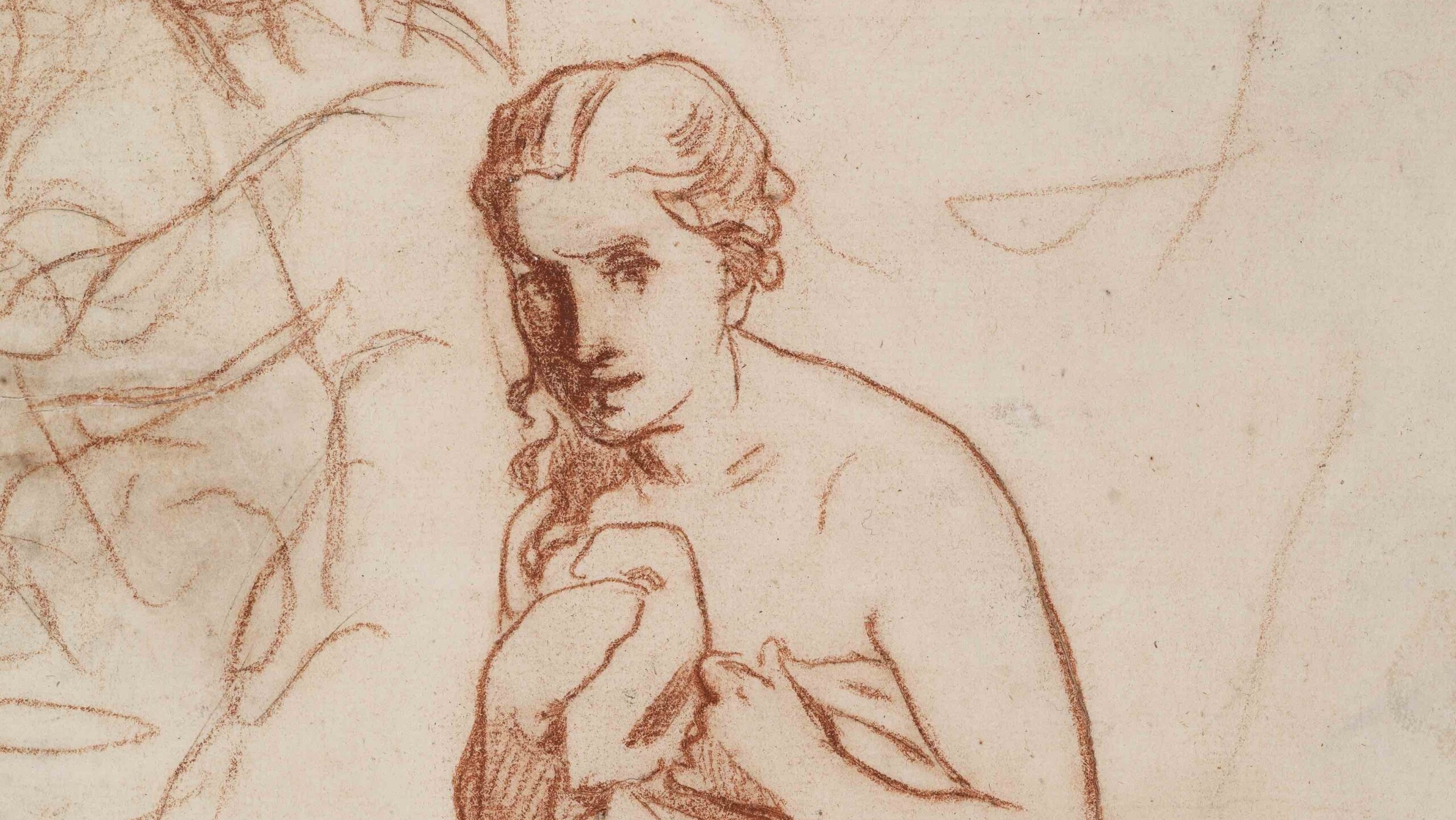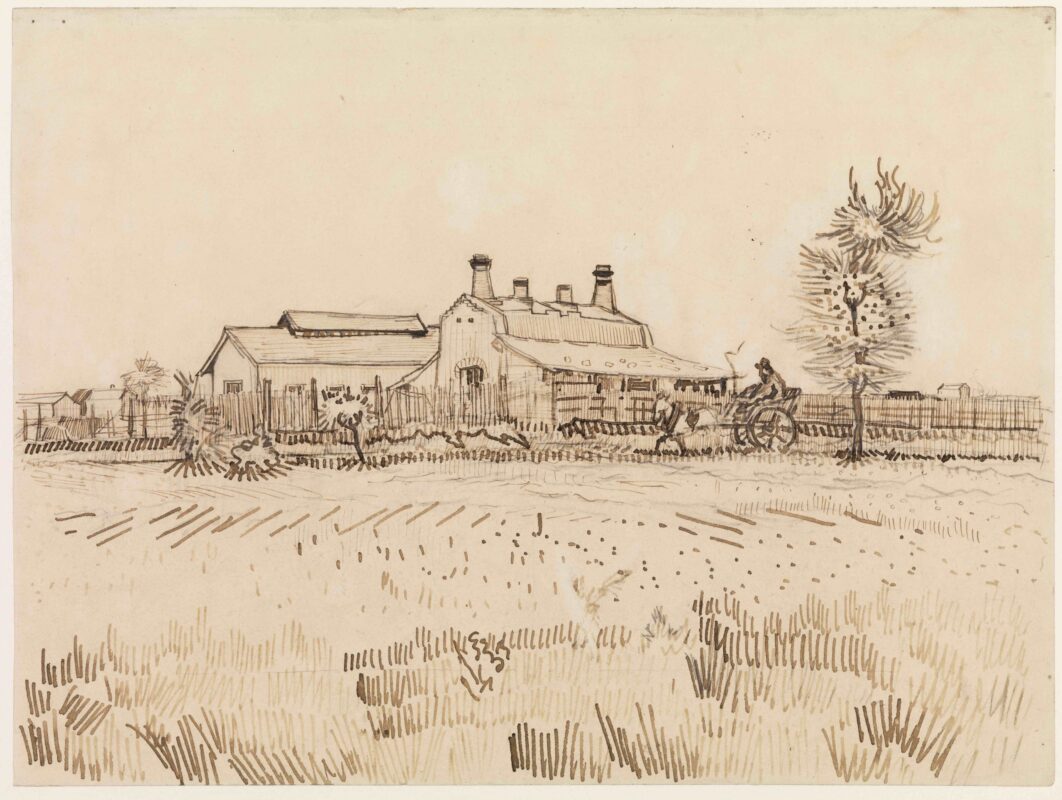
A Tile Factory
Vincent van Gogh
Van Gogh made this drawing of a tile factory at the edge of a ploughed field during his sojourn in Arles in 1888. Using reed pens of varying thickness, he rendered the scene with a wide range of marks similar to those used in his paintings, from short flecks suggesting leaves or stubble in the foreground to thinner lines denoting the factory roof.
The drawing was carefully planned. A grid, drawn in pencil, is faintly visible underneath the ink. Van Gogh probably used it to establish the perspective setting the modern factory buildings at the centre of the rural surroundings. He would have encountered these buildings on his way to Arles in February 1888, returning later to draw them once the snow had melted.
Create your own gallery
Bring home your favourite pieces from The Courtauld’s collection with our exclusive custom prints to suit your space. Choose from art paper or canvas, in a range of sizes and frames, and we will make your print and deliver it directly to your door.
View all prints
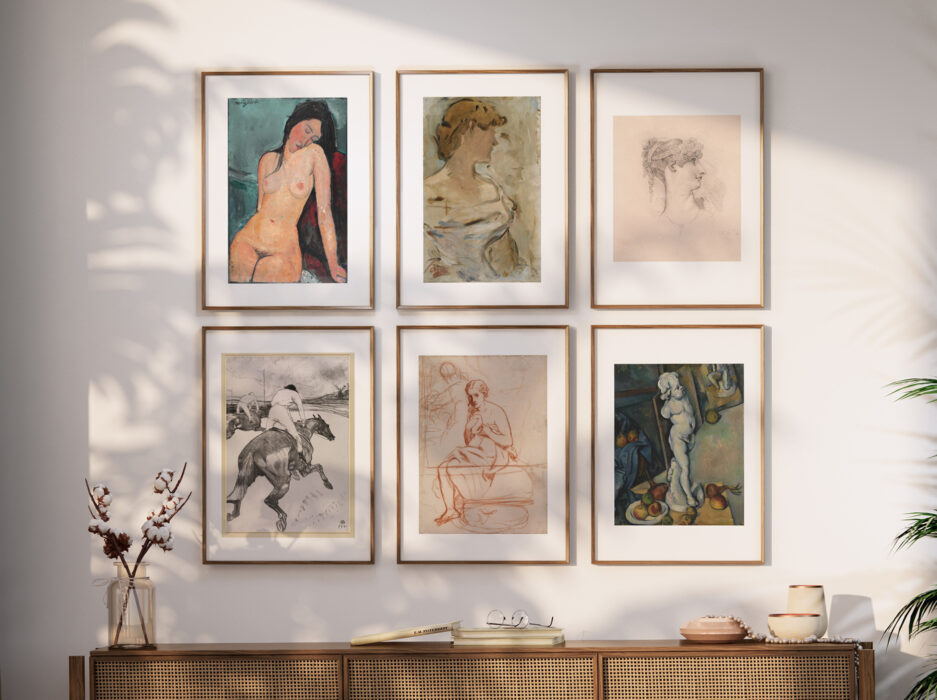
See more collection highlights
Explore The Courtauld’s remarkable collection of paintings, prints and drawings, sculpture and decorative arts.
Explore